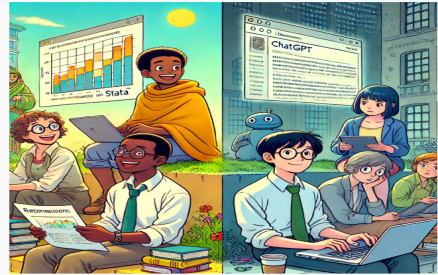Beneath the Surface: Why the Generative AI Dividend Depends on Going Deeper
By Richard Sebaggala
A few weeks ago, I sat across from my longtime friend Allan as we enjoyed a quiet lunch at a beautiful hotel in Entebbe. The breeze from Lake Victoria carried a gentle calm, while our conversation turned, as it often does these days, to artificial intelligence.
Allan shared how he uses AI tools like ChatGPT to simplify his routine. He mentioned things like getting quick summaries, organizing his thoughts, or generating short drafts. Like many people, he saw AI as a helpful assistant. However, when I showed him how I use the same tools for in-depth document analysis, extracting patterns from research data, and explaining complex concepts to students, his expression shifted. He paused and admitted with some surprise, “I didn’t know it could do all that. I think I’ve only been using it on the surface.”
That moment stayed with me.
It reminded me of another experience just a few Sundays before. I was in church, listening to Pastor James Kiyini preach a heartfelt sermon about salvation. His message was clear and filled with passion. As he spoke, my thoughts drifted briefly to artificial intelligence, a completely different subject, yet oddly connected.
It occurred to me that those of us who have gone deeper into AI often find it difficult to explain its full potential to those who have only used it casually. It is similar to trying to explain the power of faith or salvation, or the depth of love, to someone who has only skimmed the surface. Words alone can’t communicate transformation. It must be experienced.
This gap between surface users and deep users of AI is growing. It is no longer just a technical issue. It is also becoming an economic one. Recent reports show that the demand for generative AI skills has skyrocketed. In one year alone, job listings asking for AI-related skills more than tripled. Employers are even prioritizing candidates with AI experience over those with traditional qualifications. A shift is clearly underway in how we define value and talent in the workforce.
Yet even as workers, especially younger ones, begin to embrace AI, many institutions are falling behind. A global survey by McKinsey found that only about one-third of companies are actively involving senior leaders in AI adoption. Fewer still are integrating AI meaningfully into their daily operations. This is not just a missed opportunity. It is a structural limitation. Individuals can only go so far when the systems around them remain unchanged.
It is now clear that engaging deeply with AI is not optional. It is essential. But the responsibility to make that shift cannot be left to individuals alone. We need support structures, leadership, and an enabling environment. Institutions such as universities, government bodies, businesses, and even faith-based organizations need to ask tough questions. Are we preparing people for a future where generative AI is no longer a special advantage but an expected baseline? Are we equipping our teams to explore, test, and build with AI, or are we merely observing from the sidelines?
The good news is that access to AI tools has never been easier. Many of the most advanced platforms such as ChatGPT, Gemini, Avidnote, DeepSeek, offer free versions. Anyone with curiosity and an internet connection can begin to explore the deeper layers of AI.
This kind of access is unprecedented. In past technological revolutions, tools and knowledge were tightly guarded or prohibitively expensive. Now, some of the most powerful tools in the world are available to everyone, at no cost, at least for learning. That makes this moment particularly important for Africa and other developing regions. For decades, lack of infrastructure and financial barriers have kept us behind in global technology trends. AI provides a rare opportunity to change that. The tools are here. The door is open.
Today, what separates people is not access but how deeply they are willing to learn and apply what is available. That shift from scarcity to depth marks a profound change in how we think about technology and progress. I believe that this could be the most inclusive technological revolution we have ever seen. For the first time, the global knowledge economy has a real chance to become more equal. However, this will not happen by itself. It will take intention, effort, and leadership.
We need institutions that actively invest in building AI capacity. We need schools, workplaces, and public offices that create room for experimentation and learning. Leadership should not simply approve AI use; it should drive it, integrate it into decision-making, and normalize it as a tool for problem-solving and innovation.
This is not just about productivity. It is about empowerment. People deserve the chance to be full participants in the digital future, regardless of where they were born or how much they earn. What I have learned, in both life and work, is that real transformation never happens at the surface. Whether in love, faith, or technology, it is depth that makes the difference. We need to go beyond convenience and curiosity and begin to engage with AI as a serious tool for personal growth, institutional transformation, and national development.
The deeper we go, the more value we unlock. That is the AI dividend. And it is ours to claim—if we are willing to reach for it.



